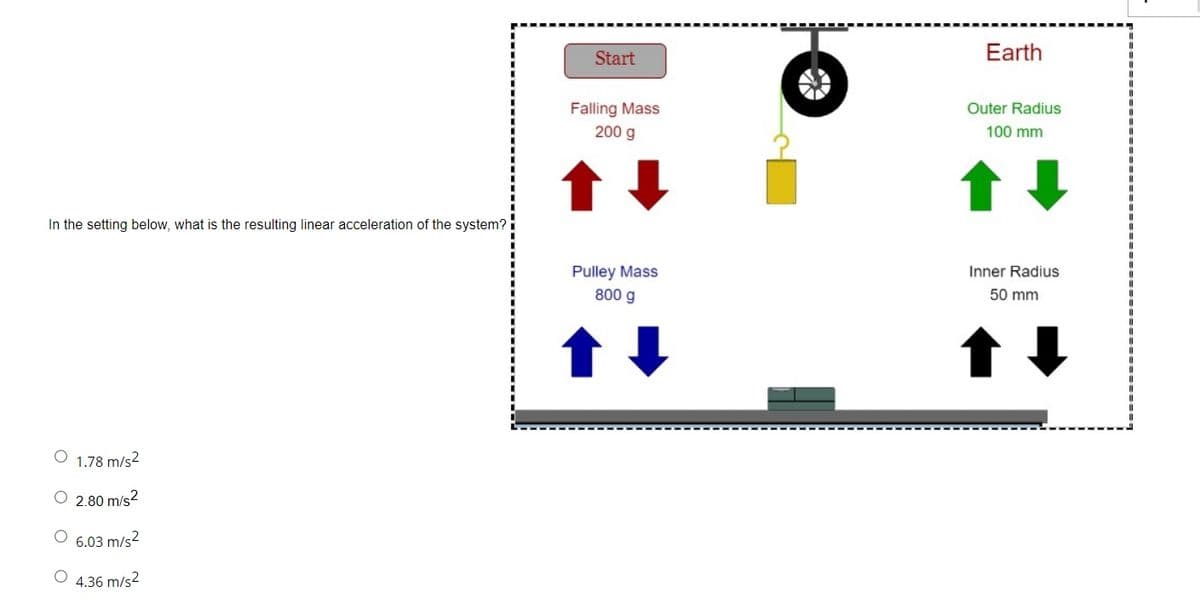Start Earth Falling Mass 200 g Outer Radius 100 mm In the setting below, what is the resulting linear acceleration of the system? Pulley Mass 800 g Inner Radius 50 mm O 1.78 m/s2 O 2.80 m/s? O 6.03 m/s2 O 4.36 m/s2
Start Earth Falling Mass 200 g Outer Radius 100 mm In the setting below, what is the resulting linear acceleration of the system? Pulley Mass 800 g Inner Radius 50 mm O 1.78 m/s2 O 2.80 m/s? O 6.03 m/s2 O 4.36 m/s2
Classical Dynamics of Particles and Systems
5th Edition
ISBN:9780534408961
Author:Stephen T. Thornton, Jerry B. Marion
Publisher:Stephen T. Thornton, Jerry B. Marion
Chapter10: Motion In A Noninertial Reference Frame
Section: Chapter Questions
Problem 10.2P
Related questions
Question

Transcribed Image Text:Start
Earth
Falling Mass
200 g
Outer Radius
100 mm
In the setting below, what is the resulting linear acceleration of the system?
Pulley Mass
800 g
Inner Radius
50 mm
O 1.78 m/s2
O 2.80 m/s?
6.03 m/s2
4.36 m/s2
Expert Solution
This question has been solved!
Explore an expertly crafted, step-by-step solution for a thorough understanding of key concepts.
Step by step
Solved in 2 steps

Knowledge Booster
Learn more about
Need a deep-dive on the concept behind this application? Look no further. Learn more about this topic, physics and related others by exploring similar questions and additional content below.Recommended textbooks for you

Classical Dynamics of Particles and Systems
Physics
ISBN:
9780534408961
Author:
Stephen T. Thornton, Jerry B. Marion
Publisher:
Cengage Learning

College Physics
Physics
ISBN:
9781938168000
Author:
Paul Peter Urone, Roger Hinrichs
Publisher:
OpenStax College

Glencoe Physics: Principles and Problems, Student…
Physics
ISBN:
9780078807213
Author:
Paul W. Zitzewitz
Publisher:
Glencoe/McGraw-Hill

Classical Dynamics of Particles and Systems
Physics
ISBN:
9780534408961
Author:
Stephen T. Thornton, Jerry B. Marion
Publisher:
Cengage Learning

College Physics
Physics
ISBN:
9781938168000
Author:
Paul Peter Urone, Roger Hinrichs
Publisher:
OpenStax College

Glencoe Physics: Principles and Problems, Student…
Physics
ISBN:
9780078807213
Author:
Paul W. Zitzewitz
Publisher:
Glencoe/McGraw-Hill